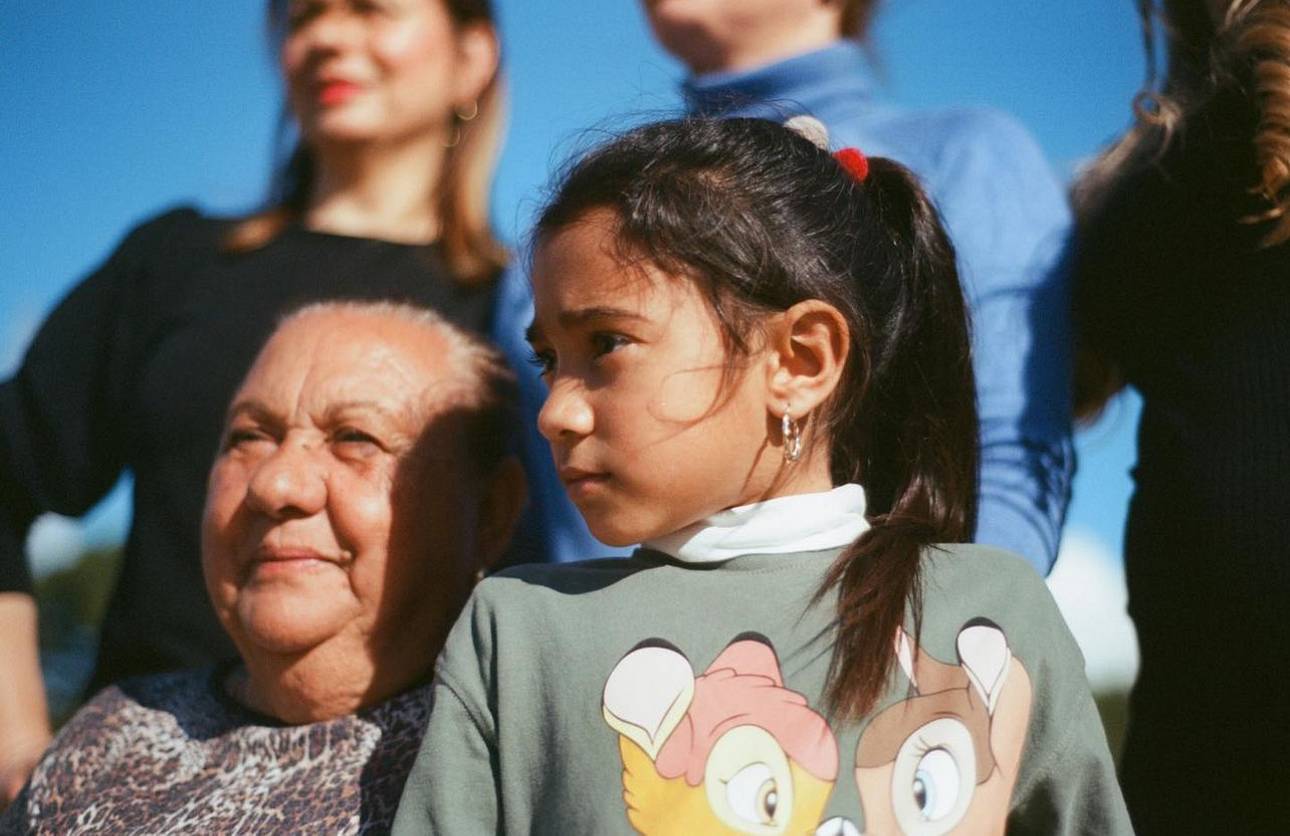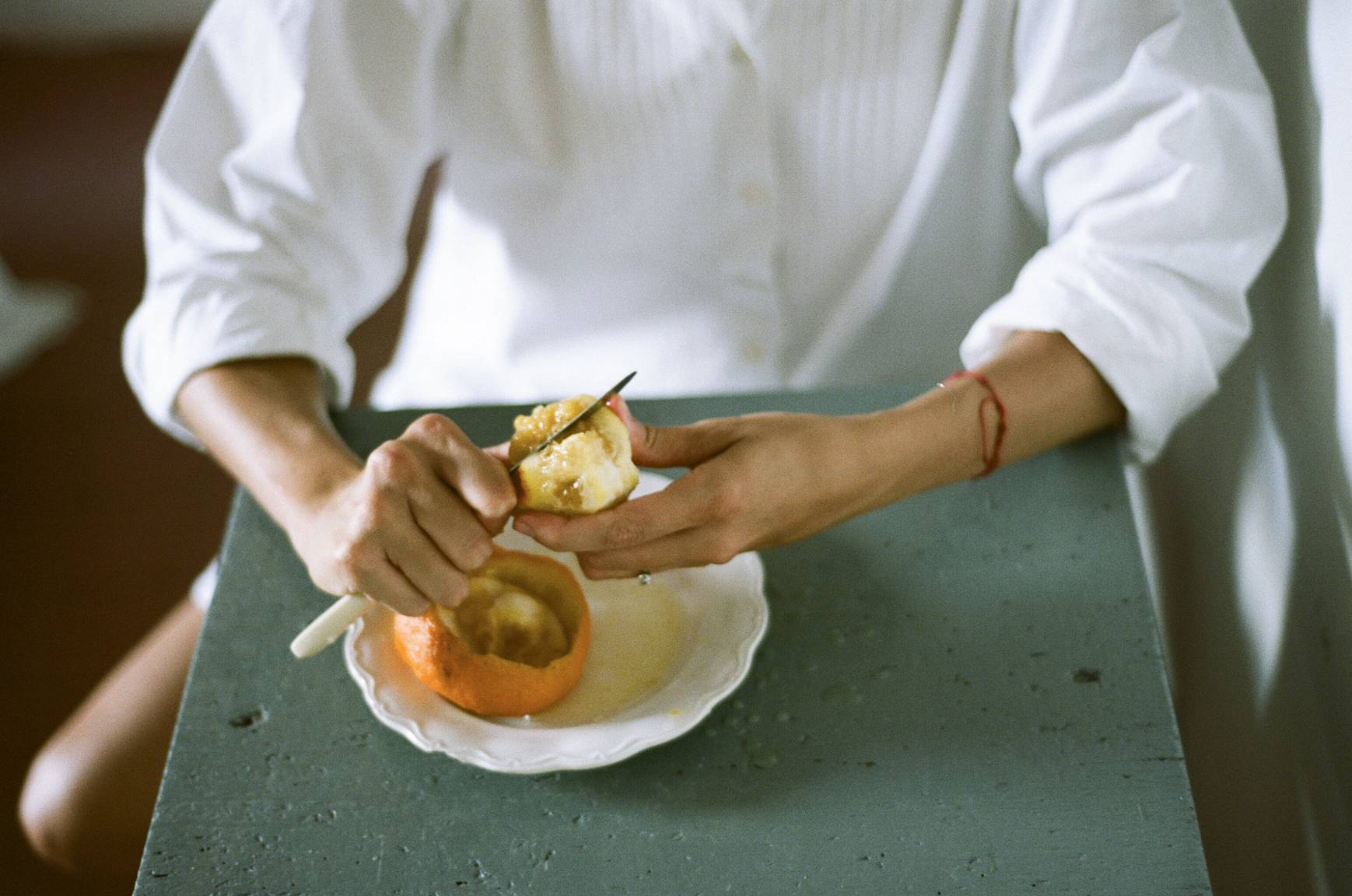Irene Baqué on Seeking Timeless Moments and Documenting Cultural Traditions
7 Share TweetFilmmaker and photographer Irene Baqué bought her first 35 mm film camera — a Lomography Fisheye One — as a birthday gift to her teenage self. She has since transformed that initial analogue interest and creativity into a still and motion picture craft grounded in journalism and documentary ethics that critically examine aspects of identity, gender, youth culture, homeland, and social justice.
With roots in Madrid, London, and Barcelona, along with a body of work that takes her to different corners of the world, Irene actively utilizes the qualities of film photography and analogue creative processes to stay true to the time, place, and histories she finds herself in. Employing cinema verité in her work has led her to create Can Carreras: Last Days of Summer, her latest short film now part of the NOWNESS Moodboard series that captures the fabric of familial summer life and the lived-in memories that come along with it.
In this interview, we speak with Irene on all things film, nostalgia, and visual studies.
Hi Irene! Welcome to Lomography Magazine! Can you tell us a bit about yourself and what you do?
I’m a film director and photographer who loves to document different communities, especially those centered around women. I am passionate about traveling to places where crafts, identity, and tradition are still very strong.
Congratulations on the premiere of your recent short Can Carreras: Last Days of Summer on NOWNESS! You often use 8 mm and 16 mm for motion picture projects, and 35 mm for stills/photography. Going back to your earlier years with film photography, when were you first introduced to this analogue visual medium? Can you share with us your history with film photography?
I guess I got drawn to film photography quite early on. Mainly because I’m not a very technical person and have always been quite slow at understanding the lighting specs of a fully manual camera. Overall, I'm capable of working with these cameras but I find that it slows me down when I see something I want to photograph immediately. That's why I prefer to use my point-and-shoot 35mm camera, as it allows me to take quick shots while still achieving the results I have envisioned.
What film cameras do you currently own?
I’ve had quite a lot of film cameras in my life, a lot of them inherited by family members. My first one was a Nikon FG-20 from my grandfather who liked to archive his life the same way I compulsively do, then used my brother’s Mamiya 7ii for a while but realized I don't have the patience for non-point-and-shoot type of cameras despite this medium format being gorgeous as it is. Later on, I also tested out my parents' point-and-shoot Nikon L35 AF and used an Mju II for a while (more for the trend) but didn't like it too much.
Recently, I bought a Canon film camera from a second-hand shop in Madrid and immediately fell in love with it. It’s one of the latest 35 mm cameras that was produced before moving into digital and it was the first time I wasn't obsessively researching about pros and cons. I went in, committed, and have been really happy with it since!
What do you like best about film photography? And what kind of moments and experiences do you enjoy photographing?
A lot of people say they enjoy the surprise factor that comes with film photography, but to be honest, I don’t exactly resonate with that. I’ve had too many disappointments in the past to have a more positive look at the waiting and unknown aspect of it all.
Although, I do admit that I like the nostalgic look of it. I grew up with a mom who would endlessly photograph our life and archive it in photo albums. So I do value the fact that film photos I take presently could now fit into those photo albums.
In terms of my photographic style, I’m drawn to colorful compositions that are representative of the identity of the place I’m in. I guess this comes from my nostalgic view of life. I’m attracted to ageless, timeless things; corners of places and spaces where it'd be difficult for one to be able to guess what year it was photographed in. I like the temporality of things and those corners of the world that remain intact in time.
Is there a photograph you’ve taken in the last few years that you’re most proud of?
This is probably one of the photos I'm most proud of. I was walking around Teotitlan del Valle, in Oaxaca, on holiday with my partner and I bumped into these teenage girls who were getting ready to perform at a local wedding. I was carrying my film camera so chatted to them for a bit and they were super keen to be photographed. I was really happy with how the photo turned out. I also feel it reflects how I was quite open and warm when I approached them and built just enough rapport for them to trust me to take their photograph.

Travel has been a large part of both your personal and professional work. Do you have a memorable story that stands out from these travels? Is there a photograph you could share that best represents that experience?
I enjoy walking through streets and neighborhoods, and usually take my point-and-shoot camera with me to capture whatever it is I feel inspired to photograph.
One of the most memorable moments was when I visited my partner’s family rancho in Oaxaca. He’d been telling me about this tradition they celebrate with the villages around the rancho since the day I met him and so I was blown away when I finally got to see it for myself. Every December, during the Virgen de Juquila celebration, over 600 people from the villages around the rancho, come for the day to visit the virgin placed in the family's small chapel. I’m not religious myself, but seeing so many people praying together asking for health and luck was just incredibly emotional.
You’ve attended and photographed quite a lot of events in Madrid throughout the years. Do you have a favorite event you’ve covered?
San Isidro is the day of the year when people dress in the traditional dresses of Chulapo and Chulapa and I’ve always loved to photograph it. Out of all the times I’ve been, my favorite picture was taken the very first time I saw the event in person.

Community, faith and religion, and youth subcultures have been overarching themes present in your film photographs. Why do you find yourself gravitating more towards these motifs and visual elements? Can you share more about the importance of these themes in your photography and ways of storytelling?
Great question. I’m not actually sure where it stems from but I know it to be deeply embedded in my work. But looking at all the images composed in past photographs, like I shared earlier, I guess I tend to document those aspects of a place that are most representative and unique to them; that being anything that unites communities, anything related to identity, types of clothing, etc.
Forms of visual storytelling are woven throughout your work in motion pictures and still photography. How does your approach differ when working on a film documentary vs a photo documentary?
I feel that my documentary photography work has always been for me a passion and a hobby — something that would support and supplement my film documentary pre-production stages. Because my main work is in documentary filmmaking, photography has always been on the side. A lot of the time, I tend to bring along my point-and-shoot camera and take photos as part of the research process for a much bigger documentary film project I'm working on.
When it comes to color I noticed you tend to lean towards pastels in your photographic work. What role does color play in your visual style? Are there certain film stocks you turn to more than others?
I’m not sure at what point my photography became so colorful, it just happened. It probably represents the way I see the world (all my clothing and home decor are quite colorful). I guess I tend to photograph bright colorful objects with a normal film stock, rather than adding color to the film. Every time I see a combination of colors together, I feel the need to capture it.
Do you have a dream project you are currently working on or would like to work on soon?
I’m obsessed with capturing traditional regional dresses that some communities of women still wear (at least once a year). I feel those traditions are getting lost due to globalization and the loss of identity clothing, so I plan most of my holidays to places I know I can find them in. Not sure where the project is going just yet, but it draws from my passion for capturing and archiving these types of community-centered and traditional clothing.
If you were a Lomography film stock, what would you be?
LomoChrome Color ’92 35 mm ISO 400. I'm drawn to that nostalgic colorful look of life!
Who are your favorite storytellers, artists, filmmakers, and creatives who also shoot on film?
I love movies that incorporate film into their ways of storytelling. Directors Sofia Coppola (who also takes amazing BTS photos of the set on a point-and-shoot camera) and Alice Rohwacher whose films are almost always shot on either 35 mm or 16 mm are just breathtaking.
What other formats, cameras, and film stocks are you looking to try out in 2024?
When it comes to my film work, I regularly work with a Director of Photography who shoots 16 mm. However, I’m starting to shoot Super 8 myself and so I'm looking to have more independence in terms of the videos and motion pictures I take.
I also own a Mamiya 645, a medium-format camera that I haven't used that often just yet. I now have my own studio so I want to start using it again but in a controlled environment. So I will definitely try the LomoChrome Color ’92 120 ISO 400 soon to see if I can bring those poppy colors to an indoor studio!
Anything you’d like to share with the Lomography community?
My only photography tips are always to get out, travel, and take a camera with you. Don’t overthink it and just photograph what your instincts tell you to shoot. Forget about trends and listen to your heart. You will always get better with time, you just need to make mistakes along the way!
Thank you to Irene for sharing her film journey with us thus far! View her latest 16 mm shot short film on NOWNESS and see more of her work on her website.
written by macasaett on 2024-03-04 #people #travel #mexico #community #documentary #madrid #35-mm































































No Comments